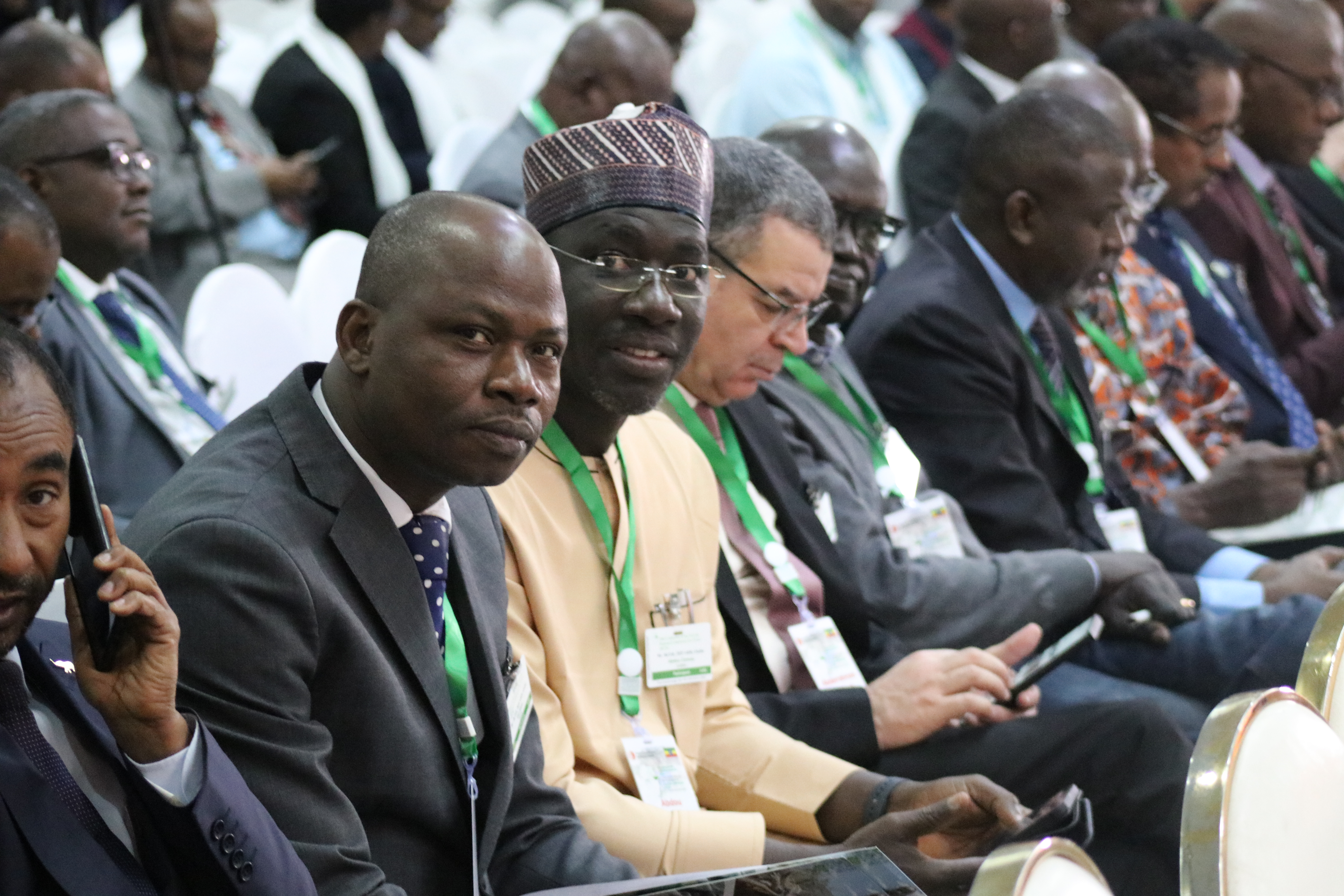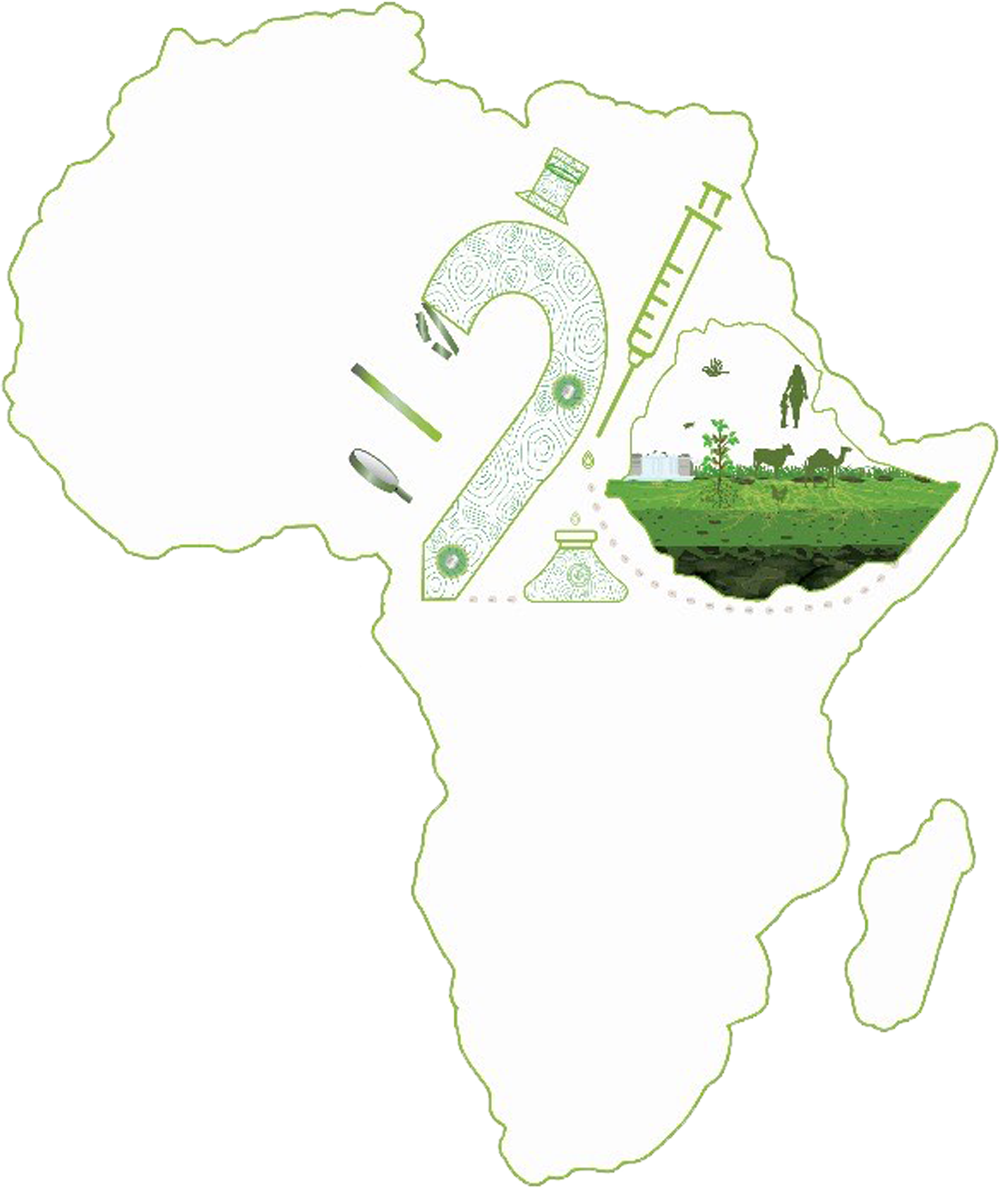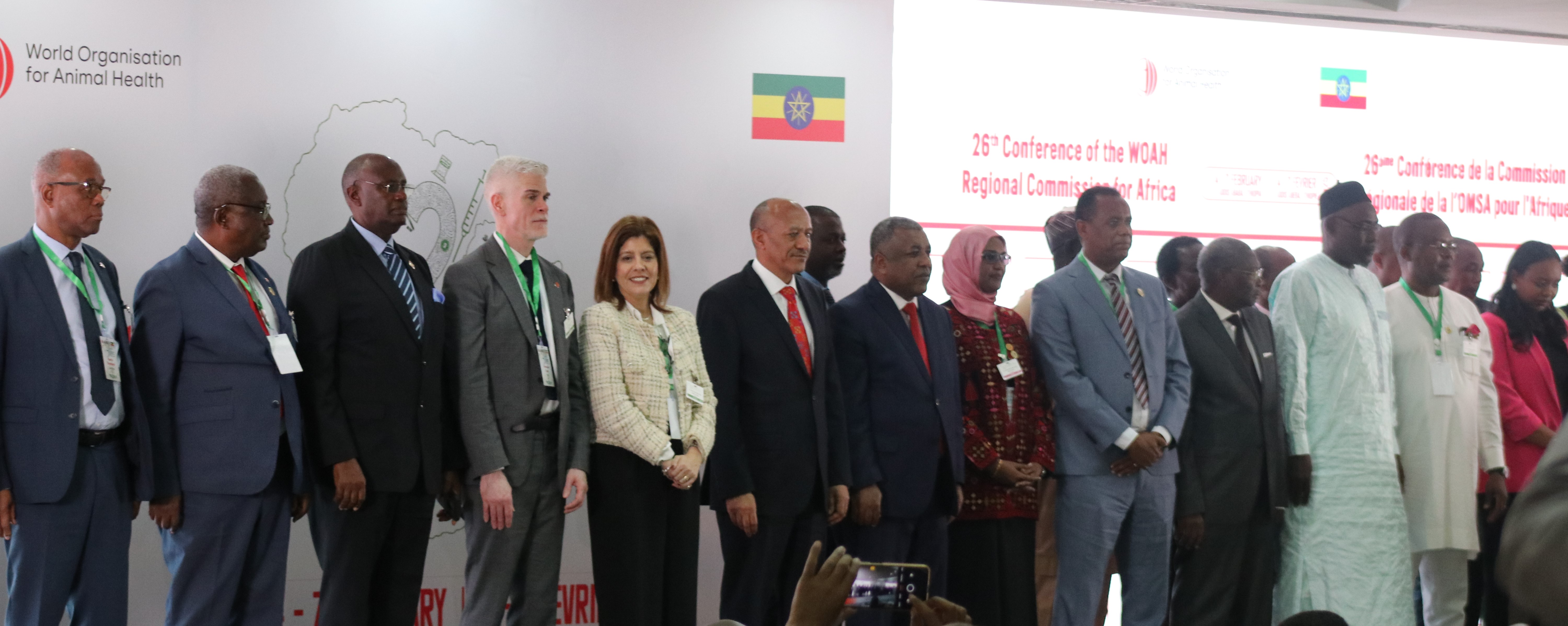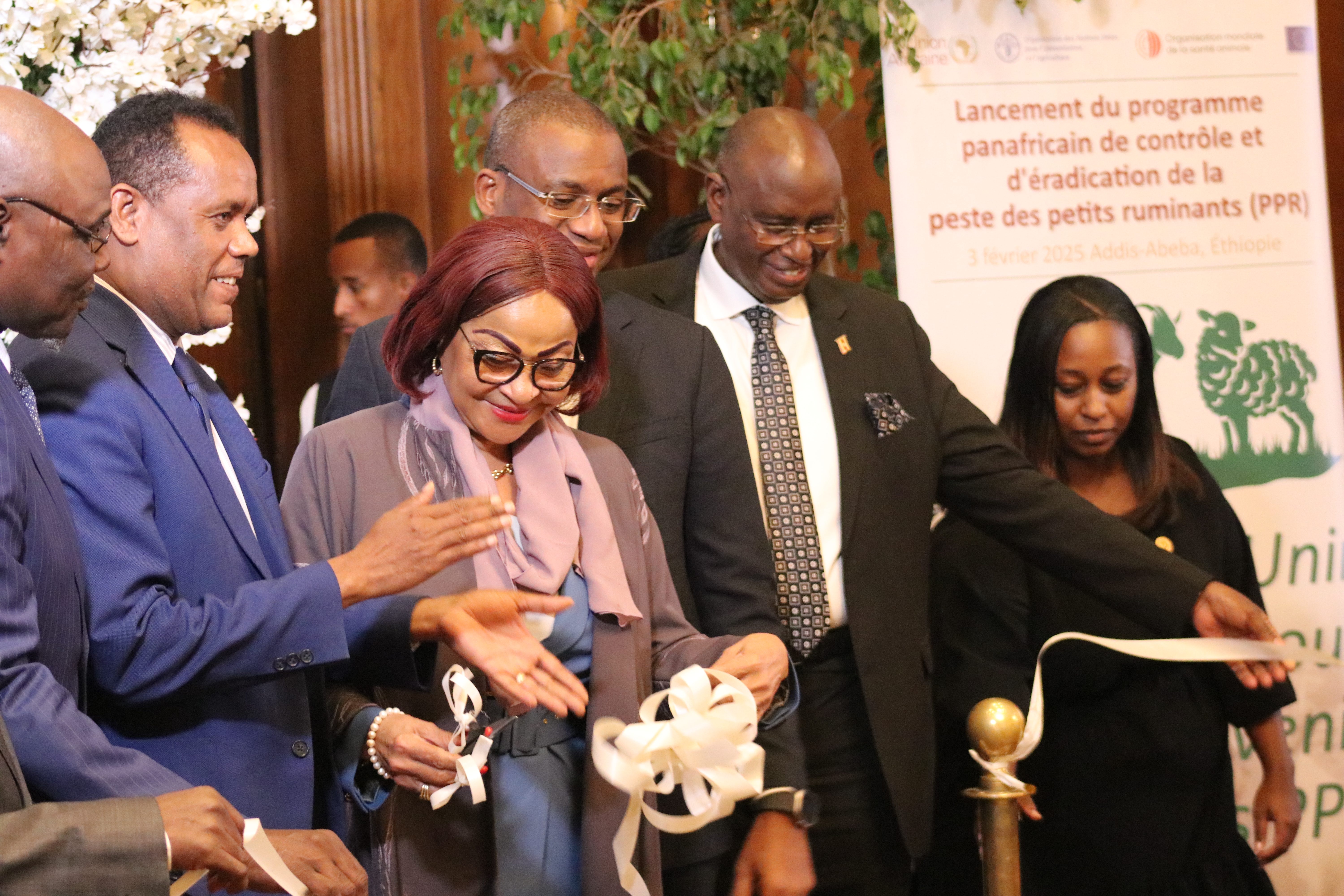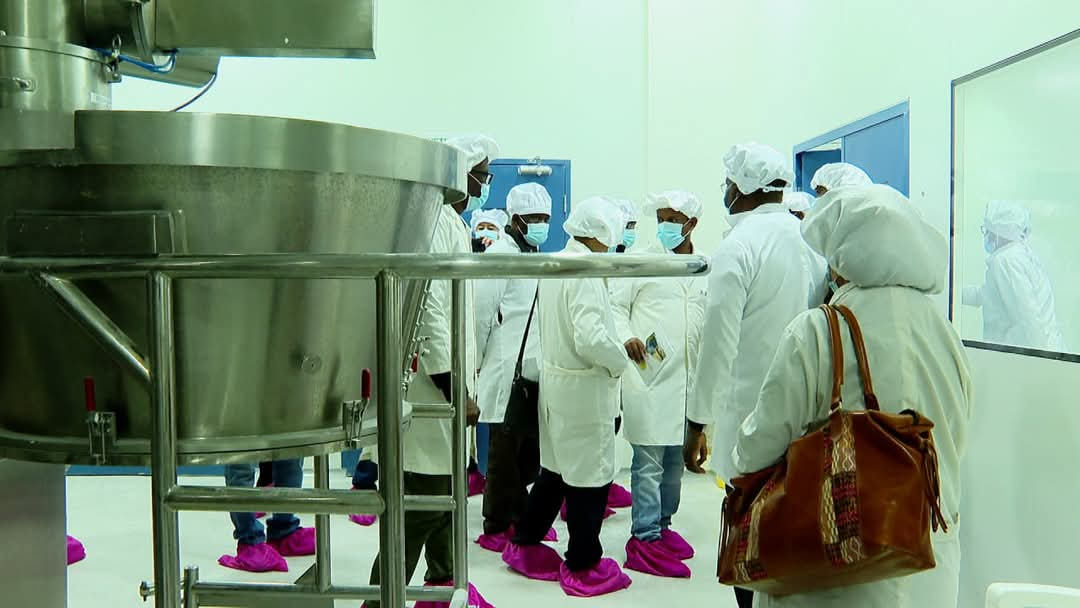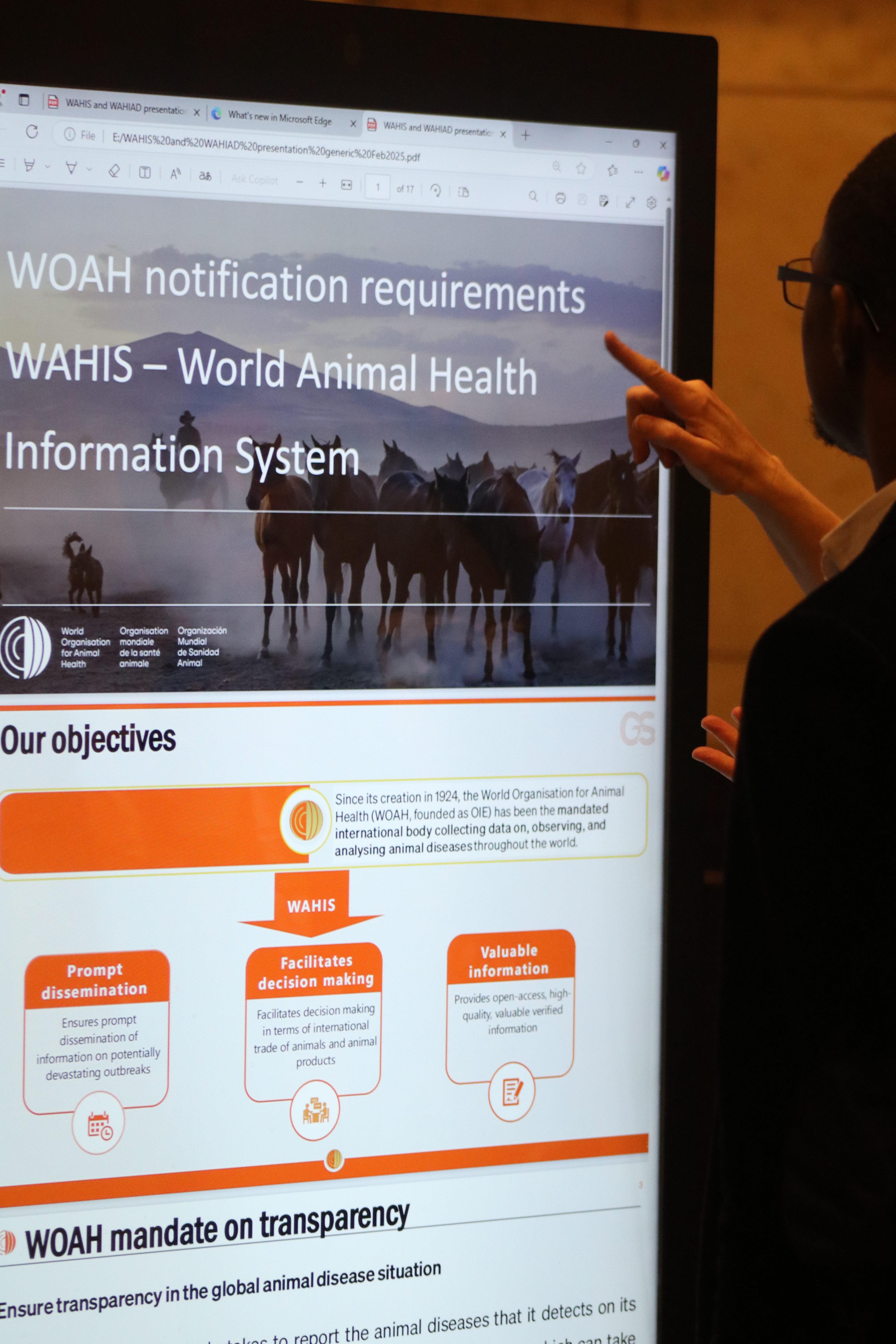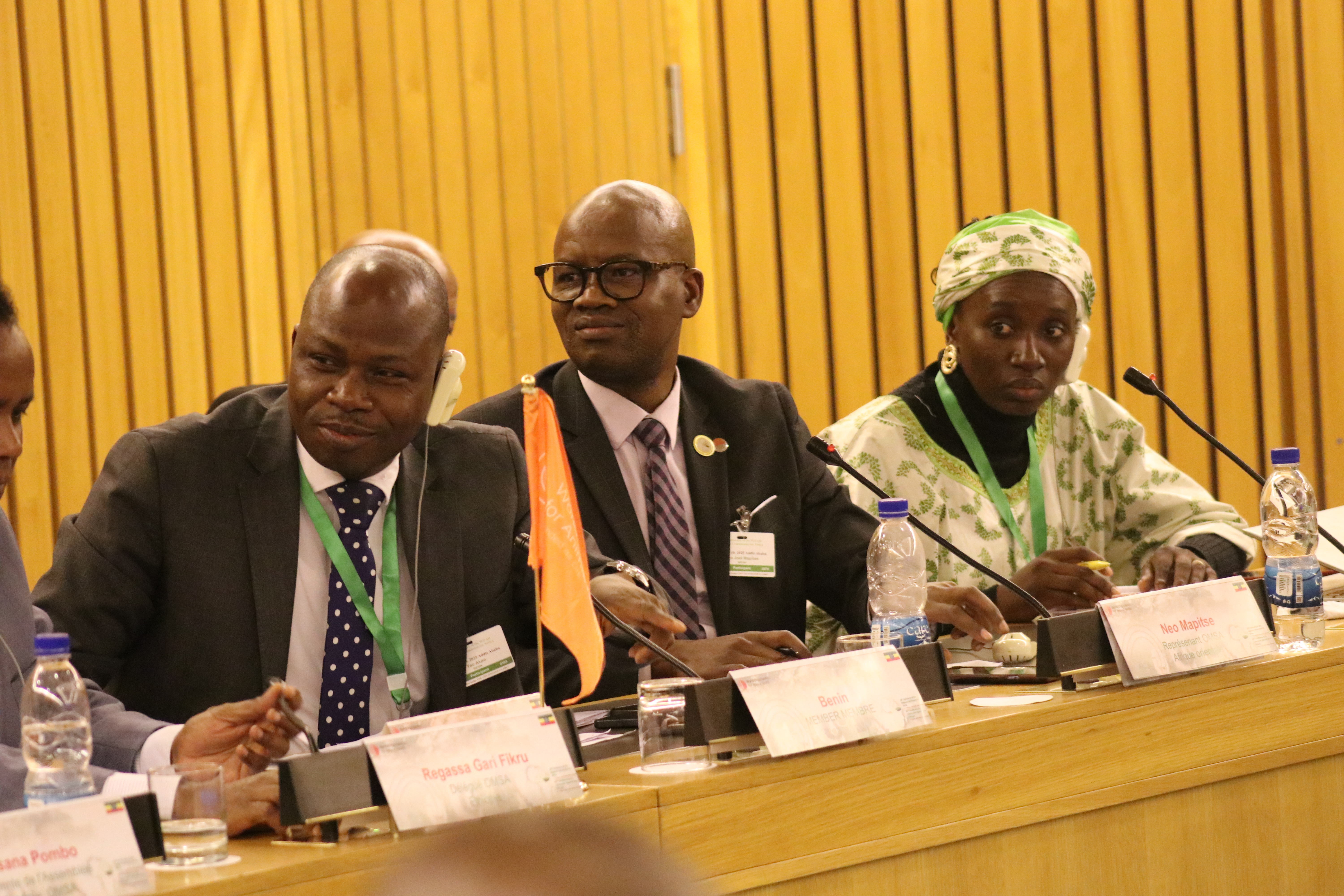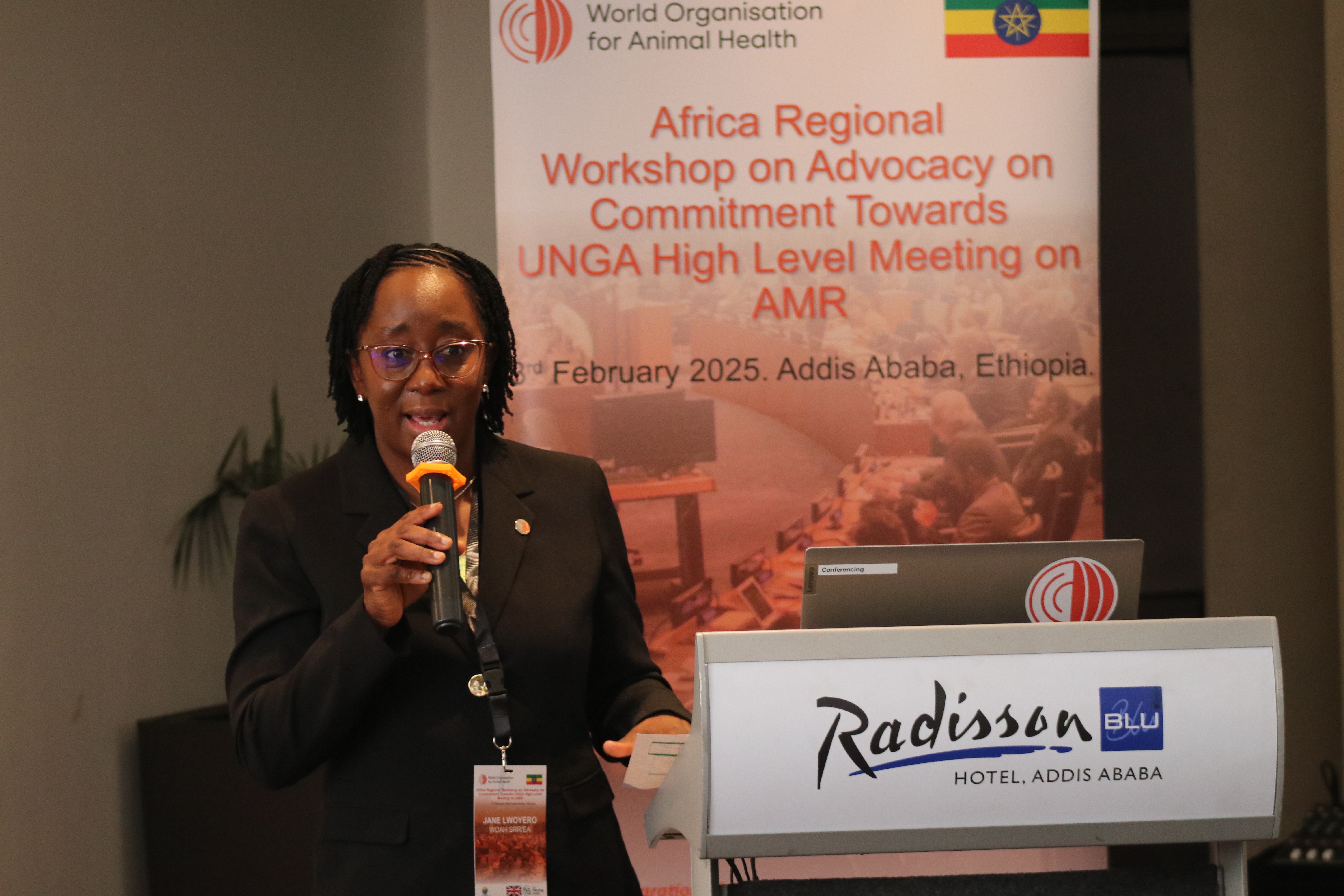
The 26th Conference of the WOAH Regional Commission for Africa, which started in Addis Ababa, Ethiopia, on 4 February 2025, came to a close on Friday 7 February 2025.
The Conference, attended by some 200 participants and 37 African countries, was chaired by Dr. Fikru Regassa Gari, WOAH Delegate for Ethiopia, along with Dr François Caya, WOAH Deputy Director General, Dr. Karim Tounkara, WOAH Regional Representative for Africa, as well as Dr. Honoré Nlemba Mabela, WOAH Delegate of the Democratic Republic of Congo and President of the WOAH Regional Commission for Africa.
This Conference was preceded by a one-day AMR Workshop on Advocacy on commitment Towards the High-level Meeting (UNGA-HLM) on AMR on 3 February 2025, at the Raddison Blu Hotel, Addis Ababa.
The inaugural meeting was held in the banquet hall of the United Nations Economic Commission for Africa (UNECA) in Addis Ababa, the capital of the Federal Democratic Republic of Ethiopia. The opening ceremony commenced with welcome remarks from several key figures including, Dr Honoré Robert Nlemba Mabela, WOAH Delegate of the Democratic Republic of Congo and President of the WOAH Regional Commission for Africa; Dr Susana Pombo, WOAH Delegate of Portugal and President of the World Assembly of WOAH Delegates; and Dr Karim Tounkara, WOAH Regional Representative for Africa.
Dr François Caya, WOAH Deputy Director General, speaking on behalf of the WOAH Director General, Dr Emmanuelle Soubeyran, highlighted the ongoing efforts to enhance the capacity and visibility of Veterinary Services across the continent. He underscored the importance of modernizing the organisation to address emerging animal health challenges and reminded participants of the centenary of WOAH, as a key milestone in the animal health sector. Additionally, he referenced the recent leadership transition, highlighting the ambitious vision of the new WOAH Director General, Dr Emmanuelle Soubeyran, elected in May 2024. Dr Caya’s comprehensive presentation emphasized WOAH’s commitment to advancing Veterinary Services and strengthening global animal health frameworks to meet the needs of the future.
On her part, Dr Huyam Salih, Director of AU-IBAR, delivering remarks on behalf of H.E. Mrs Josefa Leonel Correia Sacko, African Union Commissioner for Agriculture, Rural Development, Blue Economy, and Sustainable Environment (ARBE).
The opening session was attended by (State) Ministers, in charge of Agriculture and/or Livestock, from 5 Members, including Ethiopia :
H.E. Dr Girma Amente, Minister of Agriculture of Ethiopia invited H.E. Temesgen Tiruneh, Deputy Prime Minister of Ethiopia, who officially declared the conference open. Thereafter, the Provisional Programme was presented to the plenary, and it was adopted with slight modifications, setting the course for the conference’s discussions and activities. Participants elected the following individuals to the Conference Committee:
The 37 African countries represented at the Conference were
Group photograph at the end of the opening ceremony, with from left to right : the WOAH Regional Representative for Africa, the President of the WOAH Regional Commission for Africa, the State Minister for Animal Industry from Uganda, the WOAH Deputy Director General, the President of the WOAH World Assembly of Delegates, the Deputy Prime Minister from Ethiopia, the Minister of Agriculture from Ethiopia, the Director of AU-IBAR and the State Minister for Livestock and Fisheries from Ethiopia. Picture (c) E. Wijers (woah) 2025.
Moreover, several international and regional organisations, international NGOs, donor agencies and other observers participated in the Conference:
…as well as numerous representatives of diplomatic missions, based in Addis Ababa, private sector representatives and representatives of Ethiopian civil society organisations and associations, public sector, academia and parastatal institutions.
Represented at the meeting were also esteemed members of various WOAH decision-making and scientific advisory bodies, such as Dr Baptiste Dungu (WOAH Scientific Commission for Animal Diseases) and Prof. Yalacet Kaboret (WOAH Collaborating Centre, Ecole Inter-Etats des Sciences et Médecine Vétérinaires, EISMV Dakar).
The election of the bureau of the Conference (Ethiopia, Cameroon and Lesotho) and adoption of the agenda were followed by a first presentation made by the WOAH Deputy Director General, on behalf of the Director General, on “Empowering Veterinary Services, increasing visibility and modernising WOAH to face animal health challenges“.
This presentations was followed by the key-note address by the host-country, Ethiopia, on “Host country presentation and discussion on the Ethiopian experience”.
Two Technical Items were presented during the Conference namely:
Both technical items were followed by debates and interactions between the speakers, WOAH Delegates, and technical experts, whether national, regional or international.
In addition, a poster session was organised, supporting some of the themes tackled by formal presentations during the plenary sessions.
Dr Viola Chemis, WOAH Regional Programme Coordinator, presented the results of the GF-TADs for Africa second Standing Group of Experts (SGE) meeting on CBPP in Africa. She provided details on the priority topics of the SGE, the rationale for national and strategic plans, and some lessons learned from Zambia. She emphasized that, strengthening the capacity of National Veterinary Services is essential for effective disease control, requiring investment in workforce training and vaccine delivery solutions. Efforts should be aligned with other priority disease strategies, using cost-effective approaches such as zoning, test and slaughter, surveillance, and combined vaccination.
Dr Hiver Boussini, Head of the Animal Health Unit at AU-IBAR provided participants with an overview of the Animal Welfare Strategy for Africa (AWSA), introduced the African Platform for Animal Welfare (APAW), presented the collaboration between AU-IBAR and WOAH to promote policy alignment, capacity building in Africa and stronger regional integration, and discussed the next steps to strengthen animal welfare in the region. Members were encouraged to:
Dr Charles Bodjo, Director of AU-PANVAC (Pan African Veterinary Vaccine Center of African Union), delivered a presentation on “Increasing the Adoption of Quality Vaccines for Livestock Diseases in Africa”. Among other things, he emphasised that vaccine quality is a critical factor in disease prevention and therefore vaccination should be prioritised. While the quality of vaccines in the region is improving, with clear testing procedures in place, which is encouraging, the need for vaccines’ quality assessment remains a critical issue in the region. Laboratory improvements and assessment also play a key role in ensuring vaccine quality.
Key messages from the presentation were as follows:
On Day 2 afternoon, the presentations by Mr. Ian Peter Busuulwa, Project Officer – FIRABiOT (WOAH Representation for Eastern Africa) and Dr Francesco Valentini, Programme Officer – PROVNA (WOAH Representation for North Africa), took a deep dive into the projects and WOAH ‘s contribution to emergency preparedness.
WOAH plays a critical role in preparing and fortifying countries against these threats, given that 80% of bioterrorism-related pathogens originate from animals. WOAH’s response to these evolving threats is grounded in five vital areas, two of which were discussed during the presentation:
– WOAH has developed international standards and guidelines specifically for biosafety and biosecurity, ensuring a scientific foundation for managing health risks.
– WOAH supports countries through its Performance of Veterinary Services (PVS) framework, providing capacity-building programs like ZOOSURSY, Laboratory Twinning, FIRABioT, and PROVNA.
– Strategic partnerships with the African Union, INTERPOL, and the Global Partnership Against Weapons of Mass Destruction further strengthen efforts.
FIRABioT Project: Fortifying Resilience Against Biological Threats
One of the key initiatives is the FIRABioT project, launched in 2023 and funded by Global Affairs Canada. The project focuses on building resilience against biological threats in nine African countries, emphasizing national needs-driven workshops, biosafety protocols, diagnostics training, and the development of contingency plans for zoonotic diseases.
PROVNA Project: Eco-regional Surveillance for Vector-Borne Diseases
The PROVNA project aims to define eco-regions in North Africa for enhanced surveillance of vector-borne diseases, such as Rift valley fever (RVF). By integrating satellite data and in-field surveillance, the initiative supports targeted monitoring of disease outbreaks across the region.
WOAH remains committed to strengthening international efforts in biological threat reduction, with a Global Conference on Biological Threat Reduction set for October 2025. The conference will focus on historical experiences, current challenges, and innovative strategies for future threats.
Finally, as the global authority on animal health, WOAH’s all-hazards approach is essential in preparing for and mitigating health security threats. With strong collaboration across its membership and global partners, WOAH continues to drive impactful initiatives that enhance preparedness and response capabilities worldwide.
The PPR session started with a keynote address by Dr. Huyam Salih, the Director AU-IBAR, who presented developments on PPR eradication linking to AU policy, African Animal Health Strategy, the 2025 CAADP Strategy, the 2025 Kampala Declaration, details of the EU funded PPR programme preparatory phase, mentioning the governance aspects to be operationalised through the Pan African PPR Secretariat (PAPS). This was followed by a panel session where she mentioned the other immediate activities as sensitization and awareness of the stakeholders, working with the Regional Economic Communities, enhance advocacy and resource mobilization with push for policy decisions to prioritize PPR eradication at various levels.
The other panellists were the AU-PANVAC, Dr. Charles Bodjo; WOAH Delegate of Senegal and Council Member, Dr Mbargou Lô; WOAH Delegate Morocco and Vice-President of the WOAH Regional Commission for Africa, Dr. Abderrahman El Abrak; Dr. Felix Njeumi representing the Joint FAO/WOAH PPR Secretariat and Dr. Karim Tounkara the WOAH Regional Representative for Africa. The panel was moderated by Viola Chemis, working with the Regional Activities Department (RAD) of WOAH.
To ensure quality of vaccines used in country, the AU-PANVAC Director stressed importance of members using only certified vaccines and to utilize their website to confirm certification of vaccine batches. He also encouraged public private partnerships in vaccine production, noting that the existing vaccine producers have capacity to meet the estimated vaccine needs, however, the demand remains unknown.
The highlights from the Delegate of Morocco about their PPR eradication program showed importance of national resource mobilization, having and implementing a vaccination strategy, supportive legislation for application of control measures such as vaccination involving private veterinarians, provision of free vaccination and compensation for farmers. The weakest point for the programmes remains risk of re-introduction of PPR through livestock movement necessitating a sub-regional approach for PPR eradication. The engagement of private sector veterinarians (and VPPs for Senegal) supported increased coverage.
The Delegate of Senegal reported they have capacity for vaccine production, and they gave vaccines to neighbouring countries to support implementation of harmonised vaccination plans. Senegal is among the countries implementing the PRAPS project funded by World Bank and able to support vaccination against PPR and CBPP and post-vaccination monitoring. The country is diversifying the tools used for marking vaccinated animals to support traceability and post-vaccination monitoring. However, they are facing difficulties to access kits for sero-monitoring delaying the process.
The joint FAO/WOAH PPR Secretariat Co-chair (FAO) informed the members to prioritize collection of epidemiological, socio-economic (livestock census, animal movement, watering/grazing points, trade routes) and molecular data. He stressed the importance of traceability system, information about value chain actors, enhance surveillance and submission of PPR sequence data to PPR reference labs to support characterization and understanding of circulating strains to inform delineation of episystems. He also mentioned the support that can be provided by IAEA through the vet-lab network for capacity building and technology transfer. Members were also informed that the secretariat can provide support for advocacy, awareness raising, coordination and partnership, resource mobilisation and capacity building.
The Regional Representative for Africa, Dr Karim Tounkara, emphasised the support provided through the existing standards on surveillance and vaccination, manuals for diagnosis, endorsement of official control programs, status recognition, self-assessment using PMAT tool, notification and reporting via WAHIS, diagnostic support, capacity building and comprehensive proficiency test using the WOAH PPR reference laboratories and network. He also reminded the audience of the existing programmes through BMZ OHRT supporting Cameroon and Namibia, the PCTAD project in Eastern Africa and PRAPS in West and Central Africa.
Dr Rahul Shrivastava, from the WOAH Capacity Building Department (CBD), commented on the Africa Public Private Partnership Forum in the Veterinary Domain and highlighted the main conclusions:
Dr Abdou Ceesay, Delegate of Gambia, provided participants with details of the rabies situation in his country. He began with some key details about Gambia in general, including details of the dog population. He also provided details on disease reporting, highlighting that rabies has never been reported in wildlife in the country, with only 8 confirmed cases in dogs over a 5 year period (all between 2009 and 2012). Other suspected but not confirmed cases were reported in dogs, donkeys and horses in 2014. He also provided details of human cases reported between 2006 and 2021, with 171 patients with a history of rabies exposure, all of whom were treated with post-exposure prophylaxis (PEP).
With regard to the current situation in the country, the Delegate explained that rabies control is part of the disease prevention and control programme of the Department of Livestock Services (Veterinary Services of Gambia), rabies is a priority zoonotic disease for Gambia and a strategic approach for the control and eventual elimination of rabies was adopted in 2016, the rabies control initiative is fully supported by the Government and partners of the VS. With the exception of the last two years, the government has provided annual funding for rabies vaccines.
Gambia has implemented a year-round rabies control strategy, with annual vaccination campaigns starting on 28 September to coincide with World Rabies Day. The approach includes demand-driven vaccination of owned dogs and trap-and-vaccinate initiatives for strays, although coverage remains low. Public awareness campaigns use mass media, including national television, community radio and symposiums. Dog population control measures, such as neutering, are also in place, particularly for stray dogs. Rabies is a priority zoonosis under the country’s One Health platform, with strong collaboration between NGOs, veterinary organisations and government agencies. Partnerships with the Gambia Tourism Board enable ad hoc rabies control programmes, primarily supported by the Ministry of Tourism.
Collaboration between Mission Rabies UK and the Gambian VS has been initiated to implement a more effective vaccination campaign. With the support of WOAH, the VS have plans to survey the dog population in Gambia.
Dr Jenny Hutchison, Head of the World Animal Health Information and Analysis Department (WAHIAD), delivered a presentation on the latest enhancements of the World Animal Health Information System (WAHIS), and the reporting situation of Members from Africa.
She provided context to the reporting of Foot and mouth disease in Africa to support a panel discussion regarding their use of WAHIS and reporting practices including their use of stable events.
Five panellists (from Côte d’Ivoire, Lesotho, Madagascar, Nigeria, Uganda) participated in the discussion. The following points can be drawn from the exchange between the panellists:
Ms Jennifer Lasley, Senior Programme Coordinator of WOAH Capacity Building Department (CBD), provided all the conference participants with a training session on how to use PVS data in the PVS Information System (PVS IS) and evidence to defend investment cases for VS and act on PVS recommendations made so that the VS can provide billions of people with access to key services they lack to impact their livelihoods and improve animal health and welfare.
Delegates used PVS data, insights, and dashboards contained in the PVS IS to complete interactive exercises that helped them discover how relevant data can be found, analysed, and presented, as well as how to exploit the PVS IS to develop investment cases and strategic plans for performance maintenance and improvement.
After hands-on experience, Delegates concluded that failure to create attractive investment cases can be a bottleneck for investment in VS, and that evidence-based investment cases are key to meeting infrastructure and service gaps in Veterinary Services to inspire confidence among investors, demonstrate financial viability, and promote accountability and transparency.
The Wildlife Health Framework (WHF) was deployed in 2021 for 5 years after consultation with WOAH Members, to empower veterinary services into wildlife health issues and protect wildlife health using a One Health approach.
Under the wildlife health framework funded by 6 Members and the EU, collaborations were enhanced, guidelines were produced, data use was emphasised, capacity building was catalysed, and multiple communication tools were produced to respond to Delegates’ needs and expectations collected during the design phase of the programme.
Delegates were invited to provide input in real-time on the impact of the current WHF and areas of interest for the future WOAH wildlife health program using an interactive presentation tool. These data, combined with feedback from Delegates from other WOAH Regions will inform the next WOAH Wildlife health strategy development.
The AU Commissioner for Agriculture, Rural Development, Blue Economy, and Sustainable Environment (ARBE), H.E. Josefa Sacko, surrounded by Ministers, during the ribbon cutting celebration. Picture (c) E. Wijers (woah) 2025.
The AU Commissioner for Agriculture, Rural Development, Blue Economy, and Sustainable Environment (ARBE), H.E. Josefa Sacko, surrounded by Ministers, during the ribbon cutting celebration. Picture (c) E. Wijers (woah) 2025.
On Monday 3 February, AU-IBAR, AU-PANVAC, FAO and WOAH joined hands to Launch of the Pan-African Programme for the Eradication of Peste des Petits Ruminants (PPR), at the Sheraton Addis Hotel in Addis Ababa.
At the end of the Conference, Dr Neo Mapitse summarised the main conclusions of the conference, in which advocacy and visibility, clear frameworks and policies, collaboration and partnerships as well as community engagement and awareness were highlighted as essential elements to ensure sustainability and responsiveness of all actions related to animal health and welfare, food safety and safe trade in the Region.
Visit of the vaccine production facility in NVI, Bishoftu. Picture (c) Yodit Endalew (Ministry of Agriculture Public Relations) 2025.
The meeting in Addis Ababa ended on Thursday, 6 February with the adoption of the two sets of recommendations, for the two Technical Items (download below). Excursions were organised on Friday 7 February, both in Addis Ababa and in Bishoftu (Debre-Zeit), south of the Capital, where the National Veterinary Institute (NVI) and AU-PANVAC are based.
Visit of the vaccine production facility in NVI, Bishoftu. Picture (c) Yodit Endalew (Ministry of Agriculture Public Relations) 2025.
The WOAH World Animal Health Information and Analysis Department (WAHIAD) was present throughout the Conference with a WAHIS Kiosk, available to help Delegates and Member representatives with queries they may have on the submission to, or retrieval of information from WAHIS.
Interactive screen at the WAHIS kiosk. Picture (c) P. Bastiaensen (woah) 2025
